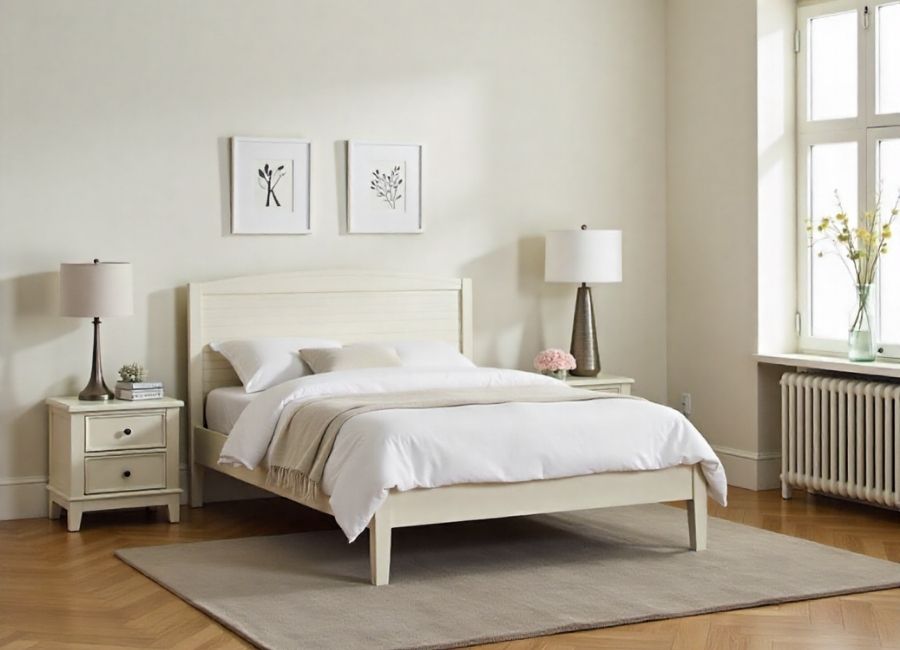Your bedroom should be a sanctuary, a place where you can relax and recharge. The way you arrange your furniture plays a huge role in creating that restful atmosphere. A well-organized room can feel more spacious and serene, while a cluttered one can contribute to stress.
This guide will walk you through how to arrange your bedroom furniture to create a space that is both functional and beautiful. We will cover everything from finding the perfect spot for your bed to placing your dresser and other essential items. By following these simple steps, you can transform your bedroom into a peaceful retreat.
Start with the Bed
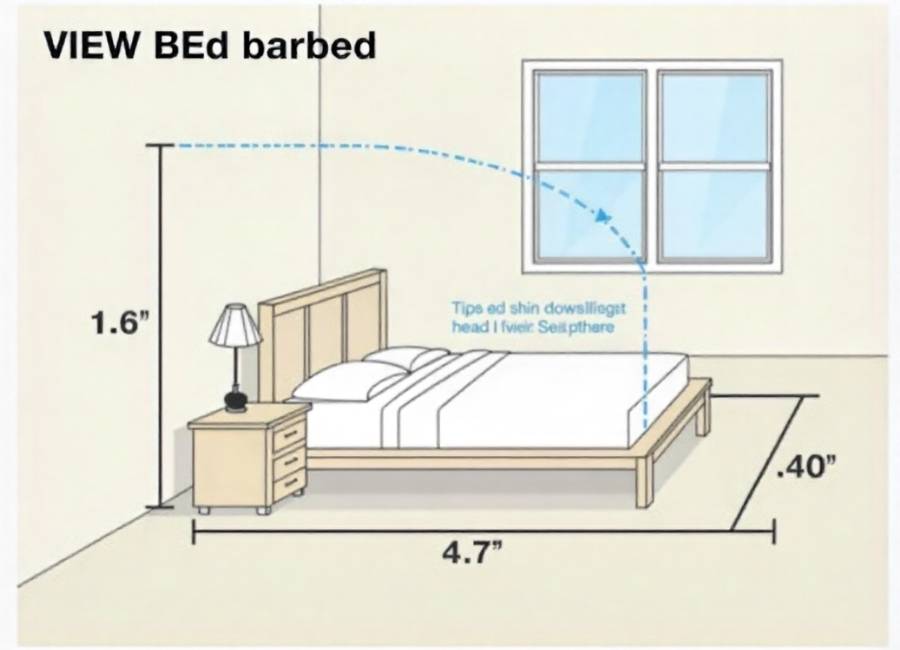
The bed is the most important piece of furniture in your bedroom, so its placement is crucial. It should be the focal point of the room, positioned where it feels most comfortable and commanding.
Where to Place Your Bed
- Against a Solid Wall: The ideal spot for your bed is against a solid wall, opposite the door if possible. (Bedroom feng shui bed position & sleeping directions chart, n.d.) This creates a sense of security and gives you a clear view of who is entering the room.
- Avoid Placing Under a Window: Placing your bed under a window is generally not recommended. It can lead to drafts in the winter and disruptive light in the morning. It can also make opening and closing the window difficult. (Where to Put Bed in Room with Windows?, n.d.)
- Center the Bed: Whenever you can, center the bed on its wall. This creates a balanced and symmetrical look that is pleasing to the eye. Leave at least two feet of walking space on either side of the bed to ensure easy movement. (How much walking space should you have around bedroom furniture?, n.d.)
Add Bedside Tables
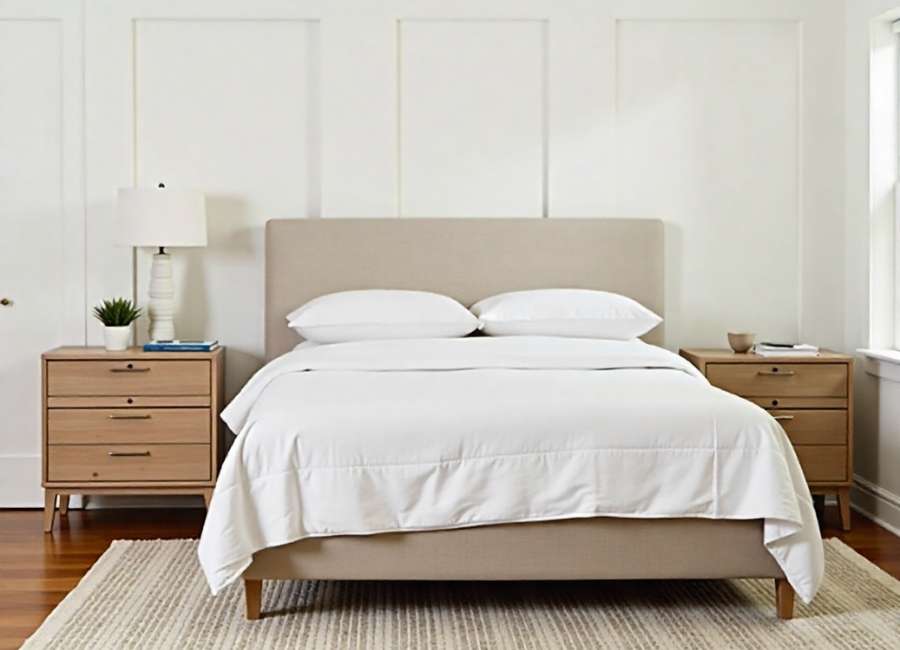
Once your bed is in place, the next step is to add bedside tables, also known as nightstands. These pieces provide a convenient surface for a lamp, a book, your phone, and a glass of water.
Choosing and Placing Nightstands
- Match the Height: Your nightstands should be roughly the same height as the top of your mattress. (How Tall Should a Nightstand Be? 3 Height Rules Plus Feng Shui Secrets, n.d.) This makes it easy to reach for items without straining.
- Consider Size and Scale: The size of your nightstands should be proportionate to the size of your bed. (Nightstand Dimensions: How to Choose the Right Nightstand Size for Your Bedroom, n.d.) A large bed will look best with substantial nightstands, while a smaller bed calls for more delicate tables.
- Symmetry is Key: Placing a matching nightstand on each side of the bed creates a sense of balance. (Balanced Beauty – Crafting Perfectly Symmetrical Bedrooms, 2024) If you have a small room or prefer an asymmetrical look, a single nightstand can also work well.
Position the Dresser
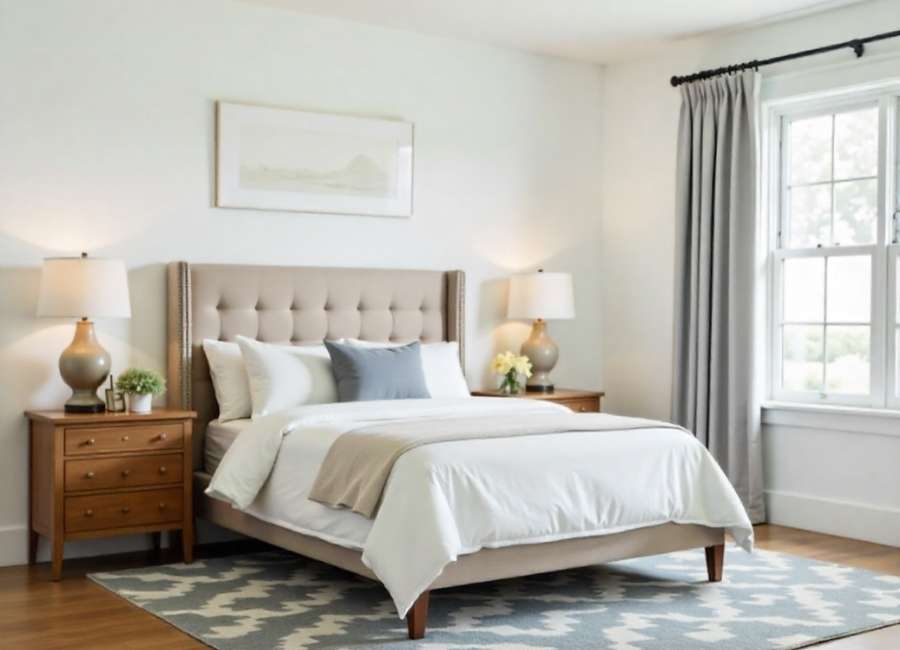
The dresser is another key piece of bedroom furniture, providing essential storage for your clothes. Its placement can impact the flow and functionality of the room.
Finding the Right Spot for Your Dresser
- Across from the Bed: A common and practical placement for a dresser is on the wall opposite your bed. (20 Clever Bedroom Furniture Placement Ideas to Maximize Space and Style, 2025) This creates a nice visual balance and keeps your main furniture pieces spread out.
- In an Alcove or Nook: If your room has an architectural nook, it can be the perfect home for your dresser. This helps utilize the space efficiently and keeps the dresser from protruding into the main traffic areas.
- Next to the Closet: Placing your dresser near your closet consolidates your clothing storage into one zone. (Moore & T., 2021) This can make getting dressed in the morning much more streamlined. Make sure there is enough room to fully open dresser drawers and closet doors without them bumping into each other.
Incorporate Seating
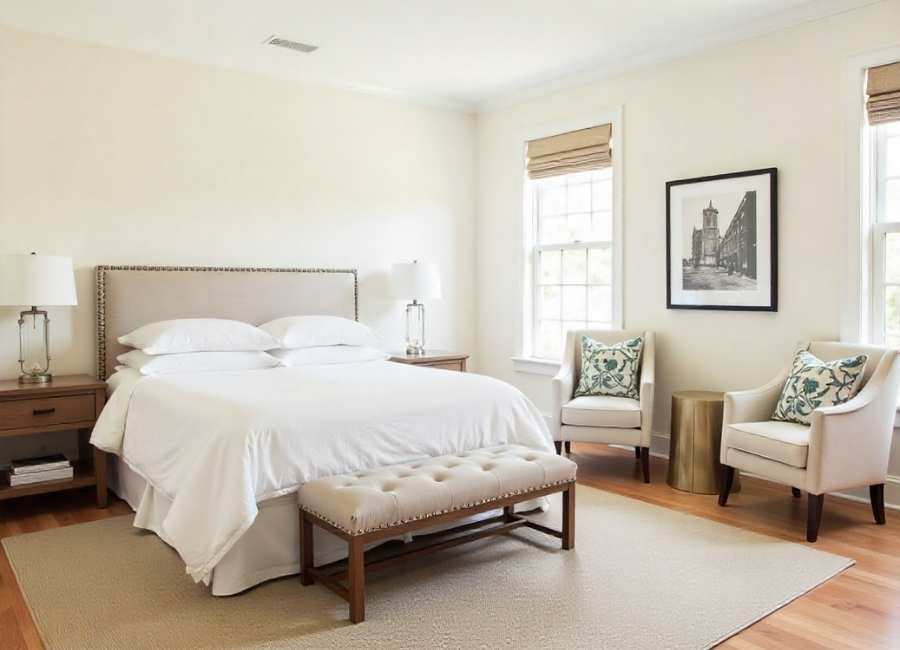
If you have the space, adding a seating area can make your bedroom feel more luxurious and versatile. It provides a spot to read, put on shoes, or simply relax without having to get into bed.
Ideas for Bedroom Seating
- A Bench at the Foot of the Bed: A storage bench is a popular choice for the foot of the bed. (Storage Benches at the Foot of the Bed: Best Picks, n.d.) It provides a place to sit while also offering extra storage for blankets or pillows.
- An Armchair in the Corner: A comfortable armchair and a small side table can create a cozy reading nook. Place it near a window to take advantage of natural light.
- A Small Loveseat or Settee: In a larger bedroom, a small loveseat can create a more substantial seating area. This is perfect if you and a partner want a private space to chat and unwind.
Final Touches: Rugs and Storage
With the main furniture in place, you can add the finishing touches that tie the room together. A rug can define the space and add warmth, while extra storage solutions can help keep clutter at bay.
- Area Rugs: An area rug should be large enough to extend at least 18 inches on each side of the bed. (How to choose the right size area rug for your bedroom, n.d.) This helps to anchor the bed and create a soft surface to step onto in the morning.
- Bookcases and Shelving: If you need more storage, consider adding a tall bookcase or floating shelves. These can hold books, decorative items, and storage baskets without taking up valuable floor space.
Your Perfect Bedroom Awaits
Arranging your bedroom furniture is about more than just finding a place for everything. It’s about creating a layout that supports rest, relaxation, and your daily routines. By starting with the bed and thoughtfully placing each piece, you can design a space that feels like a true personal haven.







